How to Focus Your Family Room on Family
http://decor-ideas.org 11/10/2013 06:10 Decor Ideas
Family rooms are supposed to promote family togetherness, but most of the time, a television dominates the space, and family members often lie unspeaking, splayed across furniture — or find themselves in another room working on a task alone. It doesn't have to be this way. You can design a space that promotes bonds with family members; social science has the answers. Here are 11 ways to reclaim your family from the TV.

1. Encourage eye contact. When we make eye contact, we bond — and talk. Place the seats in your family room so you can look at one another — not just at the TV. Think of it as a family "eye circle."
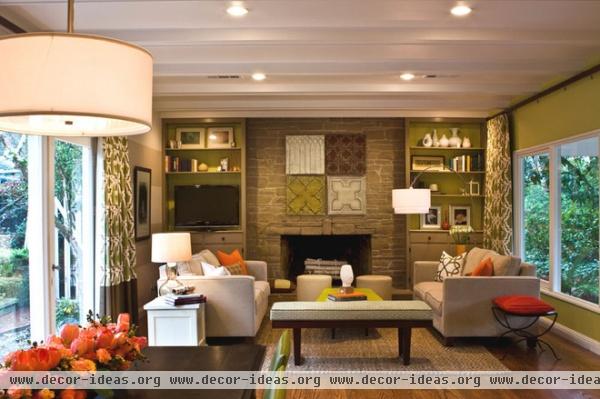
2. Offer a mix of seating choices. People with different personalities prefer to arrange themselves in different ways. The two parallel sofas here are a great way for extroverts to hang out. Additional seating lets introverts take a periphery seat and engage when they want.

3. Build in eye breaks. We need eye contact to build family bonds, but we also need to be able to take eye breaks. That means we need to be able to gracefully divert our gaze to something else, such as a fish tank or a fire, when conversation becomes a little tense. If we don't break eye contact when a conversation heats up, tension can escalate within a group.
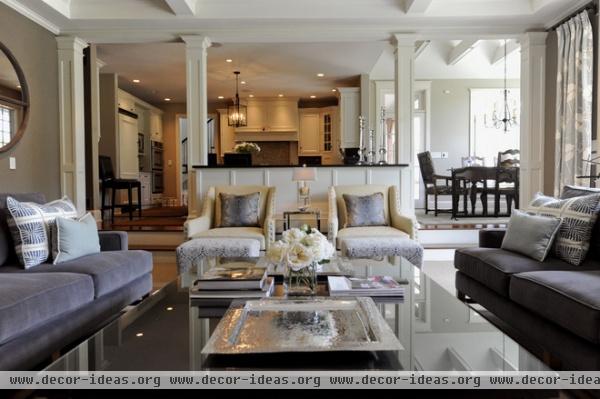
4. Protect people's backs. People gathered together are always a little distracted if it seems like someone can walk closely behind them, even if they're at home. Make sure everyone's back is protected in the family room so everyone can relax. High-backed chairs, console tables and architectural details work great.
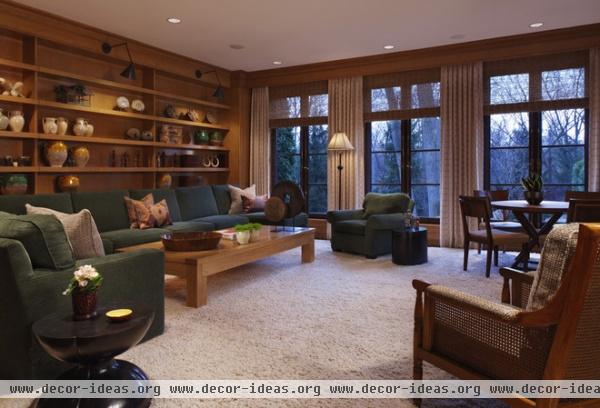
5. Plan for separate activities. Even during together time, everyone may not want to be doing the same thing. To keep everyone in the same room and happy, create several action zones. This room has a "together space" centered around the sofa, a separate chair where someone can sit and read, and a table where someone else can draw, craft or do a puzzle.
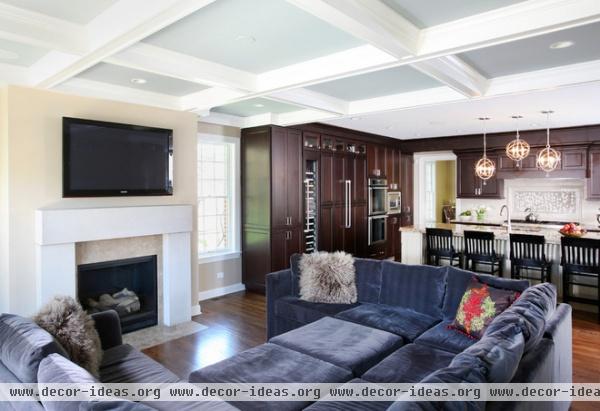
6. Create stretching-out equality. Our minds really do work differently depending on our posture. When we're stretched out, we feel and act more powerful. To make everyone in a conversation feel equal, make sure they can all stretch out. Putting only one recliner in the family room leads to someone taking on the role of family emperor.
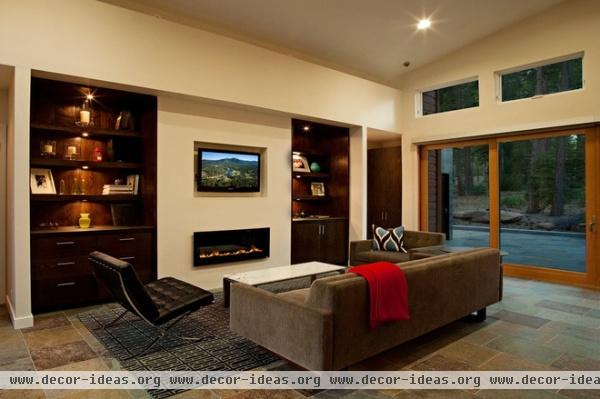
7. Keep heads at the same height. We tend to act subservient to people we are looking up at and tend to dominate those we look down on. Make sure there are enough seats in the room for all family members to sit in with their heads at roughly the same height above the floor.
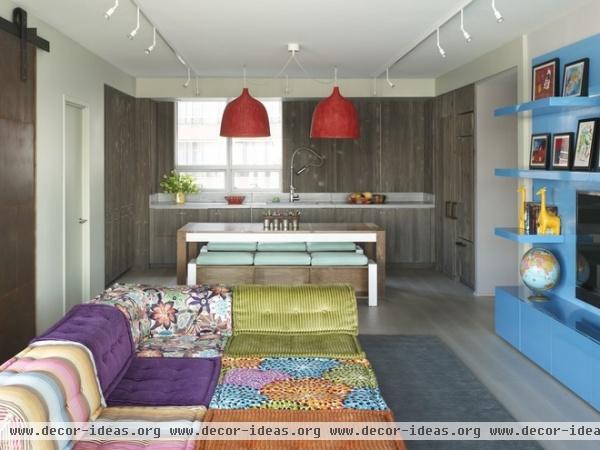
Everyone's head would be at the same height above the floor with this seating system.
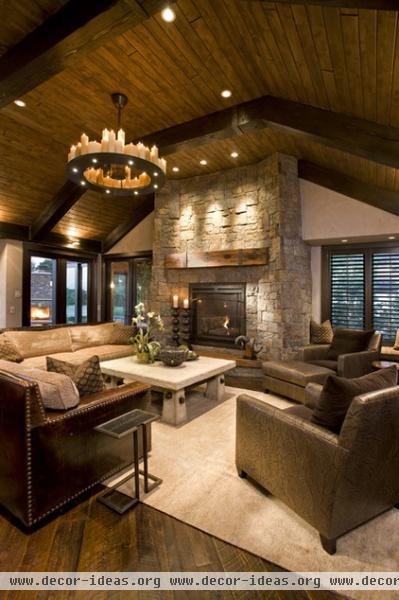
8. Use human-scale furniture. When we sit on furniture that's too large for us, we feel like kids. Make sure that the furniture in your family room allows normal-size adults to sit with their feet on the floor if they choose.
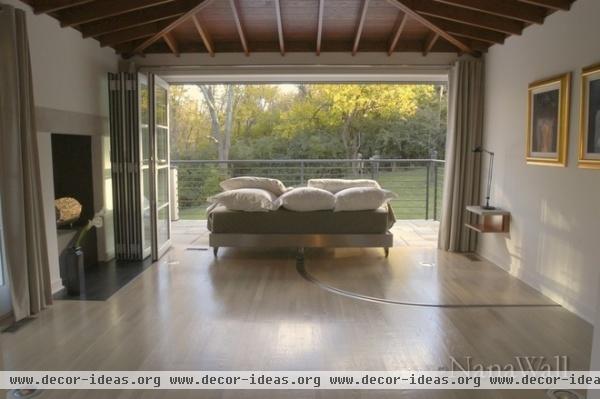

9. Make some pieces movable. People from different cultures prefer to sit at different distances from one another, so make sure that visitors to your home have at least one seat that they can easily scoot a little closer or farther from others. The yellow chair in this room can be easily relocated.
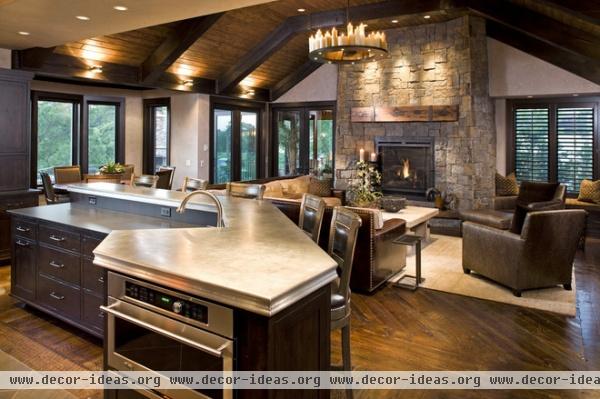
10. Fill your family room with warm light. Use warm-colored bulbs in your family room fixtures. We tend to get along better with others when we're in a space that's filled with warm light.
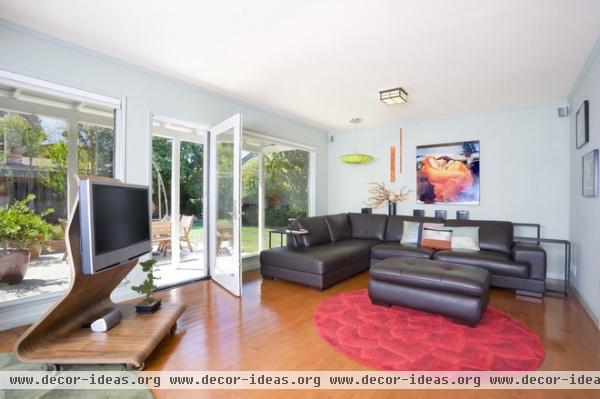
11. Make TV secondary. TV isn't going away, and families can have great times watching shows together. Having a TV that can be moved in and out of view is a great way to support occasional viewing. So is having one that's hidden in a piece of furniture when not in use.
More: How to Arrange Your Room for TV and People, Too
Related Articles Recommended












